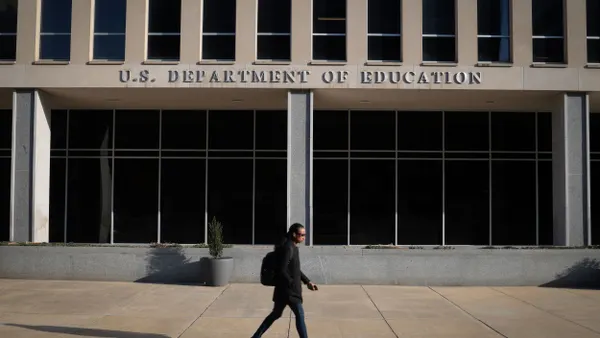Dive Brief:
- Lori Desautels, an assistant professor in Butler University's College of Education, recommends that teachers give students brain breaks and focused attention practices to create “a state of relaxed alertness,” she wrote in Edutopia.
- Desautels notes several activities for brain breaks, including one that involves students finding a partner for a drawing exercise: One student starts to draw something, and their partner copies it and tries to guess what it is. Another activity asks students to try and peel tangerines without looking and describe what sensations or feelings they experienced, she notes.
- When it comes to focused attention practices, Desautels lists several other exercises, such as giving each student an ice cube to hold in their hands or put in their mouths — without chewing or crunching it. Students are supposed to notice how slowly it melts and can connect it to the idea of a concern or worry melting away.
Dive Insight:
As classrooms continue to include rigorous academics and teach students loads of information, it can sometimes be difficult for students to stay focused and relaxed over the course of a long school day. That's why educators such as Desaultas recommend implementing practices like brain breaks — which she described as short time periods that "change up the dull routine of incoming information that arrives via predictable, tedious, well-worn roadways."
In other words, these breaks give students time to step away, refresh and digest the information they've learned, as well as help them refocus and prepare to intake new material. In addition, focused attention practices are also recommended to teach students to regulate their emotions, push through distracting thoughts and maintain a sense of calm — all of which can aid and enhance the learning experience.
Another way schools can give students breaks is through recess, which serves as another way to recharge and de-stress, as well as to encourage physical activity, foster social-emotional learning and reignite students' attention spans. While recess used to be a staple part of the school day, today's increasing demands during the school day have sometimes led to an emphasis on academics without this physical break, despite its proven benefits — a 2017 study, for instance, found that recess "helped [students] learn each other's names and interact with one another as peers, as opposed to being told or directed what to do by an adult.”
More state legislatures are considering mandatory recess and/or physical activity laws, but in the meantime, some experts have suggested ways to make unstructured play time easier to incorporate. For one, administrators can stagger recess across a school as a means of making sure proctors or supervisors aren't responsible for too many kids at once. If allotting a full recess period is less feasible, administrators and educators can also consider tacking extra time on before or after lunch.











